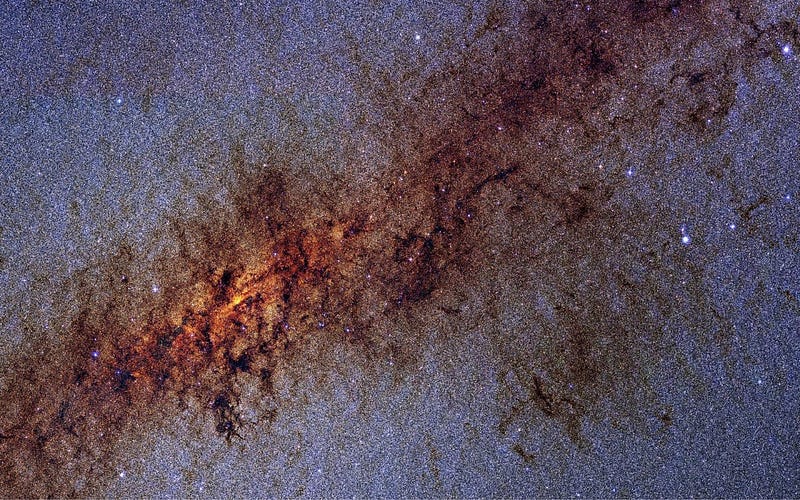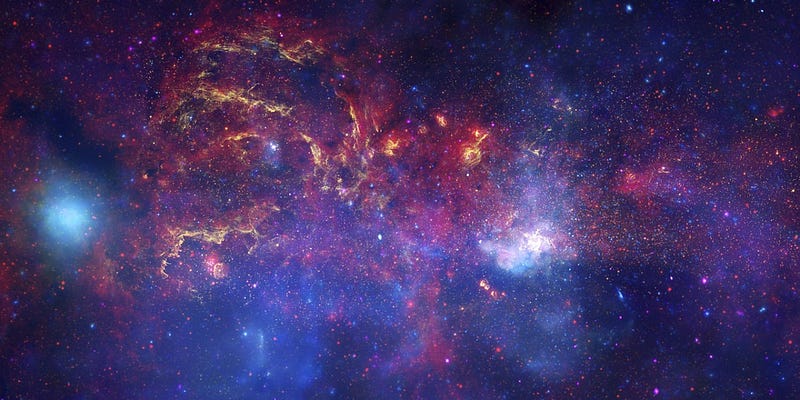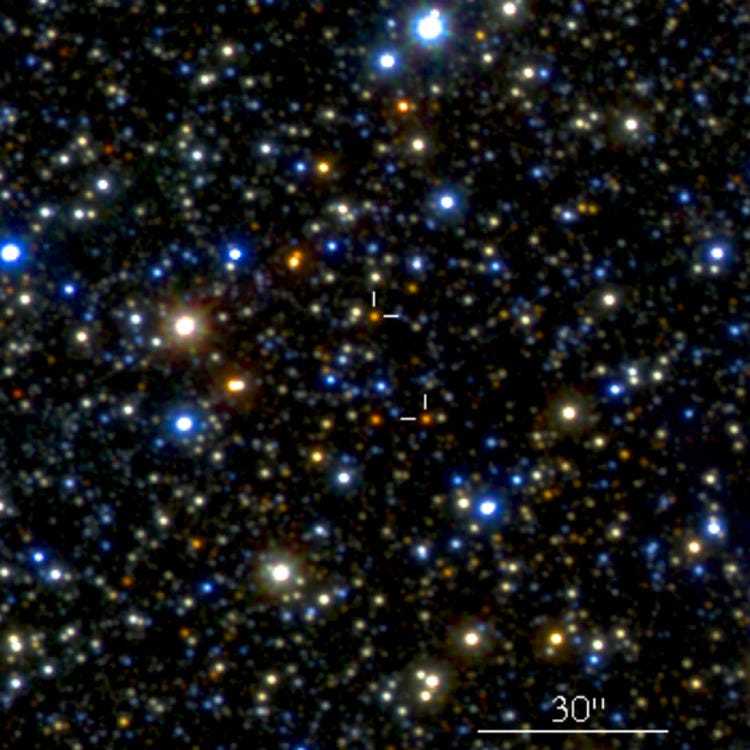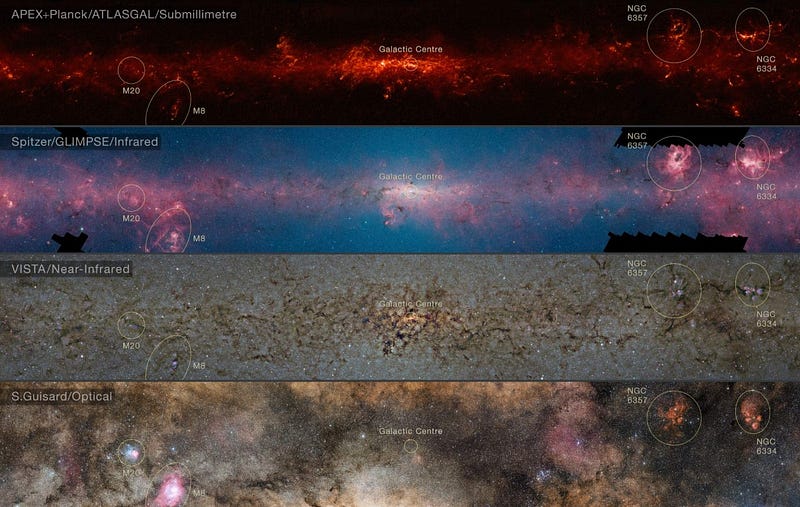Young stars are missing from our galaxy’s center

For the central 8,000 light years, there are practically no tracers of new stars. What gives?
“This suggests a lack of Cepheids in the inner 2.5 kpc region of the Galactic disc except the [Nuclear Stellar Disc].” –N. Matsunaga et al.
A quick glance up at a dark night sky reveals a wondrous assortment of stars, spanning a wide range of colors sizes and masses. When you first form new stars, you form all the types: from the faint, cool red dwarfs to the luminous, hot blue giants and everything in between. As time passes, the hottest, most massive stars burn through their fuel the fastest and die first, so that the older a population of stars gets, the fewer blue stars remain. We expect to find these young stars at specific locations in our galaxy where the ingredients for new stars are most common, including in star clusters along the spiral arms and in the very center of the Milky Way, including in the central bulge and the innermost portion of the disk. But a recent survey of a specific type of blue star — Cepheids — show that the inner disk of the Milky Way is missing these young stars almost entirely.

This is a hard-to-explain puzzle! First off, it’s not so easy to figure out what’s happening in the inner portion of our galaxy. In the same fashion that you can’t view your own eye color (without a mirror or an external camera), we have a very hard time viewing our own galaxy because of the fact that we’re immersed in it.
All the dust, gas, molecular clouds and more that populate our galactic plane work vigorously against us when we try and see through to the center of our galaxy. Viewing the stars in our own Milky Way’s center has proved to be an incredibly difficult task.

But we have a number of techniques to help us out. In particular, we can look in wavelengths other than visible light! X-ray, infrared and radio telescope observations can show us the galactic center in ways that visible light simply cannot. While our galaxy may be obscured by our most common ways of viewing it, these other forms of light allow us to view the stars that lie in these elusive confines of the Milky Way’s core, some 25,000 light years away.

Without the visible light we’re used to, it’s difficult to determine a star’s brightness and color simultaneously, which is how we normally determine a star’s mass. (And hence, place a limit on its age.) But even without this information, there’s a trick we can use, the very same trick that Edwin Hubble used some 90 years ago to discover the expanding Universe: to look for Cepheid variable stars. Cepheids are a special class of young, blue, massive star nearing the end of their lives, and they exhibit a very particular relationship between how their brightness fluctuates over time and how long it takes that brightness to fluctuate. Measure both of those things, and you know you’ve got yourself a Cepheid. Find a population of Cepheids, and you know you’ve got a region that has formed new stars relatively recently.

When we look at the plane of our galaxy along the spiral arms, Cepheids are all over the place. So it is, too, when we look at the bulge of our galaxy’s center. But in the inner 8,000 light years of the galactic disc, except for the innermost 8% or so, there are practically no Cepheids at all. For some reason, there’s something happening in the extreme innards of the galaxy that turn the formation of new stars on again, after another unknown mechanism suppresses it for such a great distance. This potentially revolutionizes what we thought about star formation in the inner reaches of our galaxy. According to N. Matsunaga et al.:
The presence of an inner thin disc, represented by Cepheids, which was suggested by Dekany et al. (2015) has not been confirmed. The lack of Cepheids in the inner part of the Galaxy, a few kpc both on the front- and far-side of the Galactic Centre, suggests that the young stellar populations do not follow the exponential disc distribution towards the centre. A similar lack in the inner disc has been also found in the distribution of H II regions. Our study demonstrated that the extinction law has a strong impact on investigations of the distribution of obscured stars in the inner Galaxy.

There are radio maps of the galaxy that support this exact picture, mapping out star-forming regions and finding a dearth of them in the inner galactic disk, while finding copious amounts of star formation elsewhere in the disk and in the Milky Way’s central bulge. Why this is the case is still a mystery, but better understanding the physics of the galactic center is one of astronomy’s primary science goals for the 21st century! As more data and discoveries continue to pour in, perhaps we’ll understand why stars in our own galaxy do (and don’t) form exactly where they’re found.
This post first appeared at Forbes, and is brought to you ad-free by our Patreon supporters. Comment on our forum, & buy our first book: Beyond The Galaxy!




